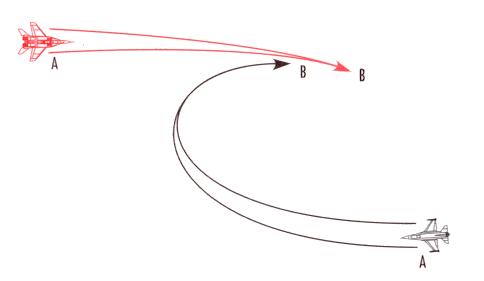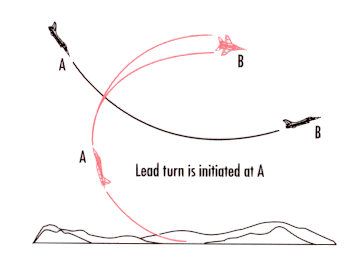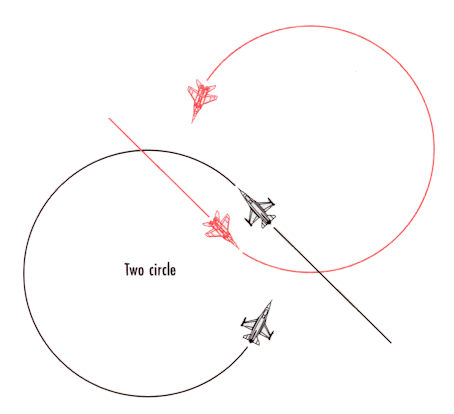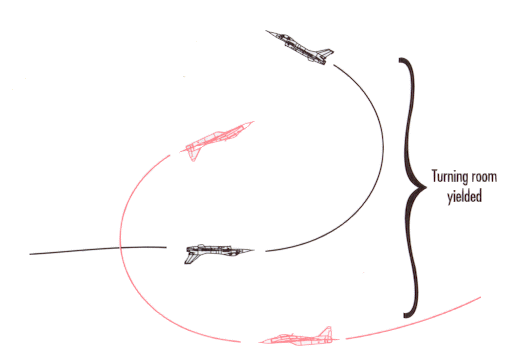Manticore
RETIRED MOD

- Joined
- Jan 18, 2009
- Messages
- 10,115
- Reaction score
- 114
- Country
- Location
Introduction to Head-On BFM
The Escape Window
A fighter pilot enters a fight to shoot down the enemy and survive to fight another day. As you enter a fight, you must be aware of your position in regard to your escape window. The escape window represents your safe path out of the fight. Said another way, the window represents your chances of separating from the fight. The window expands and contracts based on both the geometry of fight and your energy. If you jump a single bandit that doesn't have a tally, your escape window is huge. You can leave the fight at anytime. However, if the bandit picks up a tally and starts a defensive turn, your escape window starts to shrink. As the window shrinks, the probability of getting out of the fight goes down. At some point in a maneuvering fight, your escape window closes completely. The engagement on the left shows an offensive BFM setup with the attacking fighter inside the bandit's turn circle at low angle-off. Is the escape window open or closed?

In this engagement, the escape window is dosed. The engagement on the right shows why. At low angle-off, inside the bandit's turn circle, the attacker cannot get out of the fight. If he tries to leave the fight, the bandit will just reverse his turn and stick the attacker with a missile. The escape window for the bandit is definitely closed. Since neither fighter can get out of this engagement, somebody is going to the meat locker. The defensive fighter knows that he can't get out of this fight. The offensive fighter may not know the window is dosed. Lots of guys try to dive out of a closed escape window, only to get hosed in the attempt.
Below, the engagement on the left shows another offensive BFM setup. Is the offensive fighter's escape window opened or closed in this engagement?

The Escape Window
A fighter pilot enters a fight to shoot down the enemy and survive to fight another day. As you enter a fight, you must be aware of your position in regard to your escape window. The escape window represents your safe path out of the fight. Said another way, the window represents your chances of separating from the fight. The window expands and contracts based on both the geometry of fight and your energy. If you jump a single bandit that doesn't have a tally, your escape window is huge. You can leave the fight at anytime. However, if the bandit picks up a tally and starts a defensive turn, your escape window starts to shrink. As the window shrinks, the probability of getting out of the fight goes down. At some point in a maneuvering fight, your escape window closes completely. The engagement on the left shows an offensive BFM setup with the attacking fighter inside the bandit's turn circle at low angle-off. Is the escape window open or closed?

In this engagement, the escape window is dosed. The engagement on the right shows why. At low angle-off, inside the bandit's turn circle, the attacker cannot get out of the fight. If he tries to leave the fight, the bandit will just reverse his turn and stick the attacker with a missile. The escape window for the bandit is definitely closed. Since neither fighter can get out of this engagement, somebody is going to the meat locker. The defensive fighter knows that he can't get out of this fight. The offensive fighter may not know the window is dosed. Lots of guys try to dive out of a closed escape window, only to get hosed in the attempt.
Below, the engagement on the left shows another offensive BFM setup. Is the offensive fighter's escape window opened or closed in this engagement?
















